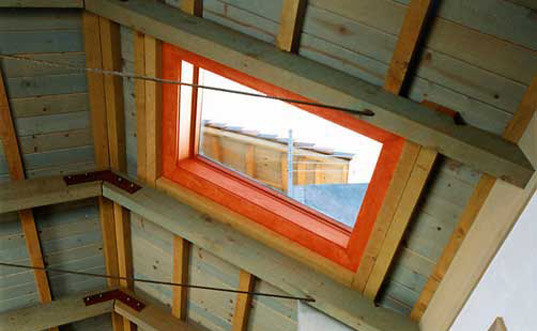The Film
The Story of Stuff is a 20-minute film that takes viewers on a provocative and eye-opening tour of the real costs of our consumer driven culture—from resource extraction to iPod incineration.
Annie Leonard, an activist who has spent the past 10 years traveling the globe fighting environmental threats, narrates the Story of Stuff, delivering a rapid-fire, often humorous and always engaging story about “all our stuff—where it comes from and where it goes when we throw it away.”
Leonard examines the real costs of extraction, production, distribution, consumption and disposal, and she isolates the moment in history where she says the trend of consumption mania began. The Story of Stuff examines how economic policies of the post-World War II era ushered in notions of “planned obsolescence” and “perceived obsolescence” —and how these notions are still driving much of the U.S. and global economies today. Leonard’s inspiration for the film began as a personal musing over the question, “Where does all the stuff we buy come from, and where does it go when we throw it out?” She traveled the world in pursuit of the answer to this seemingly innocent question, and what she found along the way were some very guilty participants and their unfortunate victims.
Written by Leonard, the film was produced by Free Range Studios, the makers of other highly popular web-based films such as “The Meatrix” and “Grocery Store Wars.” Funding for the project came from The Funders Workgroup for Sustainable Production and Consumption and Tides Foundation.
Annie Leonard, an activist who has spent the past 10 years traveling the globe fighting environmental threats, narrates the Story of Stuff, delivering a rapid-fire, often humorous and always engaging story about “all our stuff—where it comes from and where it goes when we throw it away.”
Leonard examines the real costs of extraction, production, distribution, consumption and disposal, and she isolates the moment in history where she says the trend of consumption mania began. The Story of Stuff examines how economic policies of the post-World War II era ushered in notions of “planned obsolescence” and “perceived obsolescence” —and how these notions are still driving much of the U.S. and global economies today. Leonard’s inspiration for the film began as a personal musing over the question, “Where does all the stuff we buy come from, and where does it go when we throw it out?” She traveled the world in pursuit of the answer to this seemingly innocent question, and what she found along the way were some very guilty participants and their unfortunate victims.
Written by Leonard, the film was produced by Free Range Studios, the makers of other highly popular web-based films such as “The Meatrix” and “Grocery Store Wars.” Funding for the project came from The Funders Workgroup for Sustainable Production and Consumption and Tides Foundation.




 Brrr, it’s cold outside! And depending on where you live, the air quality you are being exposed to right now might not be so great. In fact, air quality seems to be a trending news topic worldwide. Cold weather often leads to a temperature inversion where cold air is trapped underneath warmer air, resulting in hazy skies and poor air quality from the suspended pollution.
Brrr, it’s cold outside! And depending on where you live, the air quality you are being exposed to right now might not be so great. In fact, air quality seems to be a trending news topic worldwide. Cold weather often leads to a temperature inversion where cold air is trapped underneath warmer air, resulting in hazy skies and poor air quality from the suspended pollution. Air quality can be determined by the type of gaseous and particle pollutants found in the air we breathe, and more than half of the people in the U.S. live in areas that do not meet the health-bases air quality standards established by the United States. Poor air quality can lead to respiratory and cardiovascular problems along with tens of thousands of premature deaths each year! Read more about air quality
Air quality can be determined by the type of gaseous and particle pollutants found in the air we breathe, and more than half of the people in the U.S. live in areas that do not meet the health-bases air quality standards established by the United States. Poor air quality can lead to respiratory and cardiovascular problems along with tens of thousands of premature deaths each year! Read more about air quality Luckily, using and diffusing essential oils on a regular basis in the home can help eliminate indoor pollutants and pathogens. Start by diffusing our Purify Cleansing Blend, On Guard Protective Blend, or Breathe Respiratory Blend to help improve indoor air quality. Also, you’ll want to replace any chemical or toxic substances in your home, such as your
Luckily, using and diffusing essential oils on a regular basis in the home can help eliminate indoor pollutants and pathogens. Start by diffusing our Purify Cleansing Blend, On Guard Protective Blend, or Breathe Respiratory Blend to help improve indoor air quality. Also, you’ll want to replace any chemical or toxic substances in your home, such as your